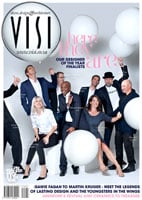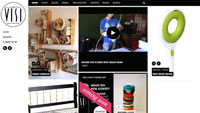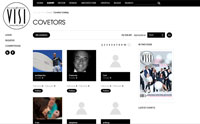Vision for Visi
Enter Jacquie Myburgh Chemaly, Visi's new editor (appointed in September 2010 but December 2010 was her first issue), with a promise to reconnect this home-grown décor, design and architecture magazine with its readers.
Much more than a magazine
In fact for Myburgh Chemaly, Visi is much more than a magazine. It's an attitude that seeks out better (and quirkier) ways to do things - she describes it as "Visiness' - that goes beyond print and even media in the broader sense. Myburgh Chemaly's 'aha' media moment came while she was watching the London subway bombings unfold on live TV during 7/7. Networks were carrying cellphone video from regular people while they scrambled journalists to the affected scenes.
"The media has changed" might sound clichéd by now but many magazine editors still haven't cottoned on. Myburgh Chemaly has, and this democratisation of media (in terms of content creators and broadcast channels) has led her to decide that she, and Visi, should tap the huge pool of design eyes and ears outside her office of journalists.
Visi (@visi_mag) has launched a new visually focused website, done by Native, plus a social network or design community, as Myburgh Chemaly calls it, aptly named 'covet.' The new site focuses on daily content and design news, freeing up the bi-monthly title to focus on less-time sensitive topics. An iPad app is also in the works and is awaiting approval from the Apple store. The magazine is readying an ecommerce feature, too.
The magazine itself will be heavily themed with a key trend explored in every issue, and Myburgh Chemaly promises not to repeat trends, as magazines often do, especially around seasons of the year.
Restore the credibility of the print element
In short, Myburgh Chemaly wants to restore the collectability of the print element of Visi by promising a read gratifying to the senses. Expect big images where the image is the hero, rather than the magazine design, and stories that relate to people ('creating design heroes') rather than solely on product. The brand will retain its unique character and its out-there, quirky attitude, with a focus on delivering real insight on important trends.
The magazine is only one part of a larger lifestyle brand instead of being a product isolated by its dependence on one distribution channel, and Myburgh Chemaly promises new activations and initiatives over the year ahead. In all of this, the brand will have to live up to the high expectations of Visi readers through a healthy infusion of that distinct sense of 'Visiness.'

Myburgh Chemaly acknowledges that Visi has seen decline in popularity over the past several years; it's a tough market and the recession has challenged luxury brands. She is also not beyond acknowledging that the magazine had become gimmicky in an effort to differentiate itself from rivals.
She would like to take circulation back to the 20 000s from its current paid for circulation of 12-13 000. It's important to advertisers for the magazine to play on the same level as its perceived competitors, says Myburgh Chemaly. In an indication of what the market can expect from Visi, she says that advertising in magazines isn't the only way for advertisers to engage with a media brand. The Visi way is doing things another way, she says, and this will also apply to its offerings to marketers.
Vision infused with 'Visiness'
Myburgh Chemaly is a respected and experienced editor, having worked on Food and Home Entertaining, Style and Elle, among others, and her own vision for Visi seems infused with 'Visiness' - an otherness that might well catapult the magazine back onto the coffee tables of those who love design beyond the template.
About Herman Manson: @marklives
- AwardsCandy - SA app start-up signing global award shows - 11 May 2012
- Ninety9cents lands Capitec, sees 43% growth y/y - 9 May 2012
- Press freedom, the commission and you - 26 Apr 2012
- Cell C drops King James, FoxP2 - retains Ogilvy - 25 Apr 2012
- Zando rockets into SA ecommerce space - 24 Apr 2012
View my profile and articles...


